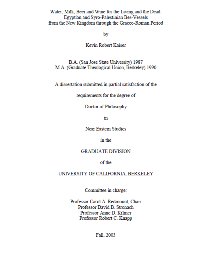| Main » Ad Board » ДРЕВЕН ЕГИПЕТ И АФРИКА » Археология |
| 03.01.2018, 15:18 | |
Дисертация посветена на глинените съдове с изображения на древноегипетския бог Бес, предназначени за съхранение на течности: вода, мляко, бира и вино. Тази керамика се появява за пръв път през епохата на Новото царство и просъществува до края на гръко-римския период. Авторът представя нейната употреба както в ежедневието, така и в заупокойните ритуали и като част от погребалния инвентар. Особено интересен е анализът на ДНК и протеиновите фрагменти в запазената част от съдържанието на някои образци. Материалът е допълнен с над 400 цветни изображения на съдове. - на английски език, от Google Docs,формат PDF, файлът не е архивиран. Сваляне с ляв бутон (downloading by left button) от страницата на предоставящия сървър, после през бутона стрелка надолу/after by down arrow button.
| |
| Views: 1622 | Placed till: 20.08.2022 | Rating: 1.0/1 | |

